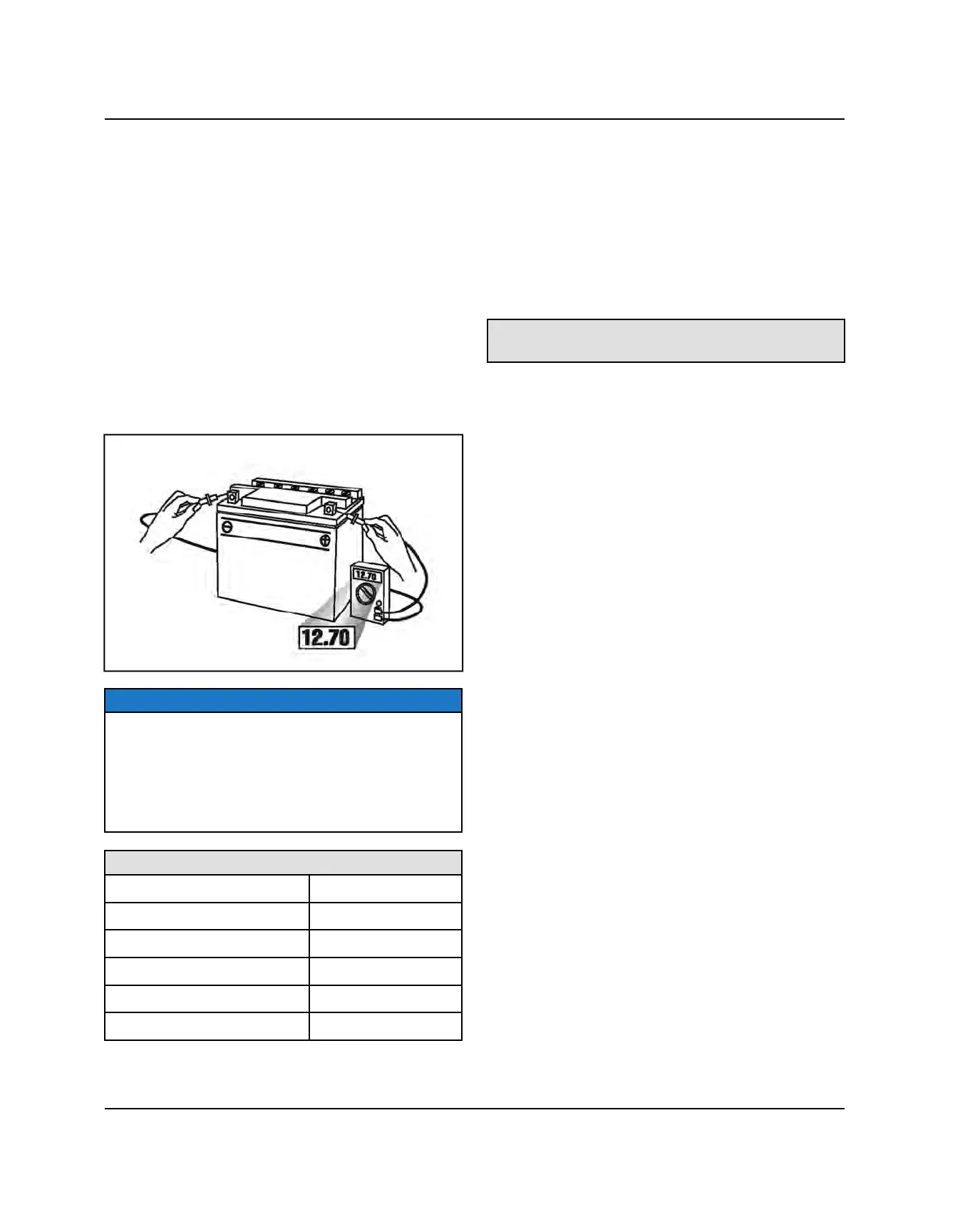11.30
9926806 R03 - 2015 - 2016 RANGER ETX / 570 2-SEAT 2015 - 2016 RANGER 570 CREW Service Manual
© Copyright Polaris Industries Inc.
BATTERY REMOVAL / INSTALLATION
See Chapter 2 “Maintenance” for battery service
procedures.
CONVENTIONAL BATTERY TESTING
Whenever a service complaint is related to either the
starting or charging systems, the battery should be
checked first.
Following are three tests which can easily be made on a
battery to determine its condition: OCV Test, Specific
Gravity Test and Load Test.
OCV - OPEN CIRCUIT VOLTAGE TEST
Battery voltage should be checked with a digital
multimeter. Readings of 12.6 volts or less require further
battery testing and charging. See the following chart.
NOTE
Lead-acid batteries should be kept at or near a full
charge as possible. Electrolyte level should be kept
between the low and full marks. If the battery is stored
or used in a partially charged condition, or with low
electrolyte levels, hard crystal sulfation will form on the
plates, reducing the efficiency and service life of the
battery.
OPEN CIRCUIT VOLTAGE
State of Charge YuMicron™ Type
100% Charged
12.70 V
75% Charged
12.50 V
50% Charged
12.20 V
25% Charged
12.0 V
0% Charged
11.9 V or less
VOLTAGE DROP TEST
The Voltage Drop Test is used to test for bad
connections. When performing the test, you are testing
the amount of voltage drop through the connection. A
poor or corroded connection will appear as a high
voltage reading. Voltage shown on the meter when
testing connections should not exceed .1 VDC per
connection or component.
To perform the test, place the meter on DC volts and
place the meter leads across the connection to be tested.
Voltage should not exceed
0.1 DC volts per connection
ELECTRICAL

